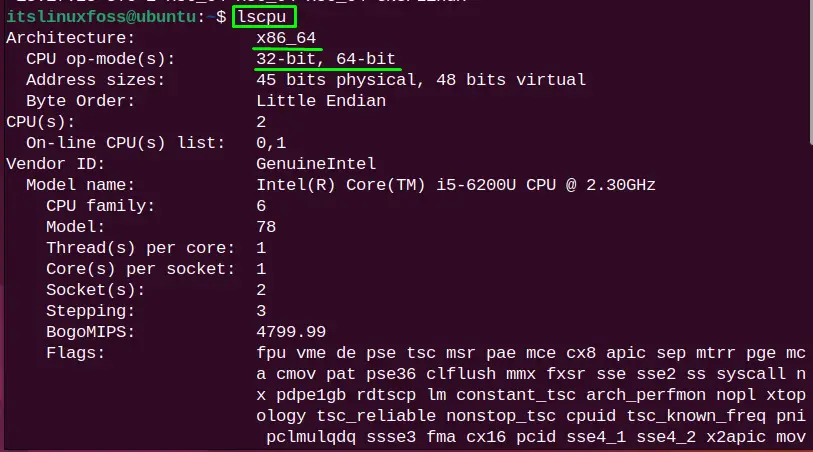The “i686” represents the 32-bit while the “x86_64” represents the 64-bit as well as 32-bit based packages. The 32-bit and 64-bit packages are considered for installing it on the operating system based on CPU compatibility. The 64-bit-based package performs better as compared to the 32-bit because it increases the number of calculations per second.
This post will describe a brief demonstration of the “i686” and “x86_64” packages.
- What is the “i686” Package?
- What is the “x86_64” Package?
- How to Check the Architecture Package in Linux?
- Comparison of “i686” and “x86_64” Packages
What is the “i686” Package?
The “i686” packages are utilized to run them on 686 compatible processors that comprise Intel, AMD, and other 32-bit processor chips. The “i686” (32-bit instruction set) is part of the x86 family line that supports only up to 4GB of RAM.
What is the “x86_64” Package?
The “x86_64” packages are utilized to run them on processors having 64-bit compatibility that comprise AMD Athlon 64 and 64-bit based AMD families. The “x86_64” architecture was developed by AMD that has the ability to perform both 32-bit and 64-bit based packages. The “x86_64” packages scale ram more accurately in specific scenarios like large workloads of databases that require more ram.
How to Check the Architecture Package in Linux?
To check the architecture compatibility of Linux distribution, run the “lscpu” command as shown:
$ lscpu

The processor has “x86_64” compatibility that supports both packages 32-bit and 64-bit.
Comparison of the “i686” and “x86_64” Packages
The difference between “i686” and “x86_64” Packages is described in the following table:
| “i686” Package | “x86_64” Package |
| The “i686” package executes on the 32-bit based processors. | The “x86_64” package executes on the 64-bit based processors. |
| Only supports 32-bit compatibility processors. | Support both 32-bit and 64-bit compatibility processors. |
| “i686” was developed by Intel. | “x86_64” was developed by AMD. |
| The “i686” architecture supports up to 4GB of RAM. | The “x86_64” architecture supports more than 4GB of RAM. |
Conclusion
The difference between the “i686” and “x86_64” packages is that the “i686” run on processors having 32-bit compatibility. While “x86_64” packages run on processors having both 64-bit and 32-bit based compatibility. The main benefit of using the “x86_64” package is that it supports both 32-bit and 64-bit based processors.
This write-up has briefly illustrated the “i686” and “x86_64” packages
